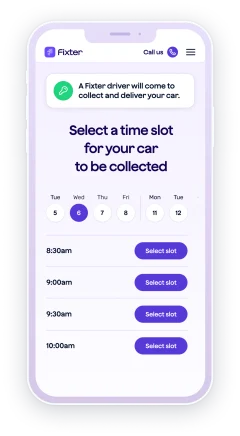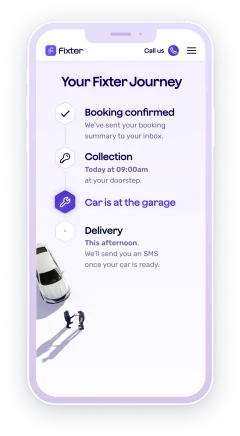Common problems with Hyundai Tucson
Owning a Hyundai Tucson can be a rewarding experience, yet like any vehicle, it can come with its own set of challenges. From minor glitches to more significant mechanical issues, being aware of common problems helps you stay prepared and ensures your car remains reliable.

In this guide, we’ll delve into the typical concerns Hyundai Tucson owners might face, equipping you with practical insights and advice. Whether it’s understanding dashboard warning lights or addressing strange noises, our aim is to provide clear and straightforward information. Read on to become better equipped to handle any issues that may arise, ensuring your Tucson runs smoothly. For additional context, we’ll also reference the Hyundai Tucson’s overall reliability score to help you see how it compares to other vehicles in its class.
Introduction to Hyundai Tucson
The Hyundai Tucson is a standout in the compact SUV segment, first introduced in 2004 and quickly gaining popularity among car buyers. Known for its stylish design, the Tucson features bold lines and a distinctive cascading grille that give it a modern, eye-catching look. Inside, the Tucson offers a comfortable and well-appointed cabin, often equipped with features like leather upholstery, advanced infotainment systems, and seamless smartphone integration. Buyers can choose from a variety of engine options, including efficient petrol engines, robust diesel variants, and eco-friendly hybrid and plug-in hybrid models. Thanks to its blend of impressive features, reliable performance, and solid build quality, the Hyundai Tucson remains a solid choice for those seeking a reliable and stylish compact SUV.
Overview of Hyundai Tucson’s Performance and Appeal
The Hyundai Tucson’s appeal lies in its ability to deliver a well-rounded driving experience that balances comfort, reliability, and modern features. While it may not be the flashiest car in its class, the Tucson covers all the essentials with confidence. The interior is thoughtfully designed, offering supportive seats and a comfortable driving position for both short commutes and long journeys. Advanced safety features, such as lane keeping assistance, lane follow assist, and intelligent speed limiting, come standard on many Tucson models, providing peace of mind for drivers and passengers alike. With its good fuel economy, spacious interior, and competitive pricing, the Hyundai Tucson is a reliable and practical compact SUV that continues to attract buyers looking for a dependable car with modern amenities.
Engine Performance Issues
The engine is the heart of your vehicle, and any issues with it can significantly affect your Hyundai Tucson’s performance. Engine failure can occur, especially in high mileage Tucsons and older models, often due to problems like engine knocking or faulty components. Being informed about potential engine problems is crucial for maintaining smooth operations and prolonging the life of your car.
Troubleshooting Engine Stalls
Engine stalls can be frustrating and potentially dangerous. Stalling often occurs when the engine fails to receive adequate fuel, air, or power.
To troubleshoot:
Check the fuel levels - Ensure your tank is not running low.
Inspect the air filter - A clogged filter can restrict airflow.
Examine the spark plugs - Worn-out plugs can cause misfires.
Example: A Tucson owner experienced stalling due to a dirty air filter. After replacing it, the issue was resolved.
Addressing Power Loss
Loss of power can make driving unpredictable and stressful. It's often due to fuel system issues, inadequate compression, or electrical faults.
Fuel system inspection is vital. Ensure the fuel pump and injectors are functioning.
Compression tests can reveal internal engine problems.
Electrical checks should cover the battery and alternator.
Case Study: A Tucson experienced power loss due to a failing fuel pump. Replacing the pump restored performance.
Understanding Overheating Causes
Overheating is a common issue that can lead to severe engine damage if not addressed. Causes vary from cooling system failures to thermostat issues.
Check for coolant leaks or low levels.
Ensure the radiator fan is operational.
Inspect the thermostat for proper function.
Real-World Example: Overheating in a Tucson was traced to a faulty radiator fan. Replacing the fan solved the issue.
Regularly check coolant levels.
Pay attention to smells or unusual engine temperatures.
Transmission Problems
Transmission issues can impact driving smoothness and overall vehicle performance. Among the most common transmission problems experienced by Tucson owners are rough shifting, rough or delayed shifts, and delayed shifting. Both automatic and manual gearbox versions of the Tucson can experience these issues; manual gearbox problems may include difficulty shifting or gear slipping. Some transmission issues, such as rough or delayed shifts, can often be resolved through transmission software recalibration. Recognising and addressing these problems early can save you costly repairs down the line. Additionally, some owners have experienced rough shifting, which can be a sign of underlying transmission problems.
Recognising Slipping Gears
Slipping gears can make your vehicle unpredictable. This issue can stem from low transmission fluid or worn clutches.
Check transmission fluid levels and condition.
Inspect for worn-out clutches or bands.
Example: A Tucson had slipping issues due to low fluid levels; refilling and sealing a leak resolved it.
Regular fluid checks are essential.
Address slipping promptly to prevent further damage.
Dealing with Delayed Shifts
Delayed shifts can disrupt the driving experience and indicate deeper transmission issues. Common causes include faulty sensors or low fluid levels.
Inspect sensors for faults.
Check fluid levels and quality.
Real-World Insight: A Tucson's transmission delay was due to a defective sensor. Replacing it restored normal function.
Regular diagnostics can catch sensor issues early.
Ensuring proper fluid levels is key.
Identifying Transmission Leaks
Transmission leaks can lead to slipping or overheating. Identifying leaks early helps maintain optimal transmission health.
Inspect the transmission pan and seals.
Look for puddles under the vehicle.
Case Study: A Tucson owner noticed leaks due to a cracked pan. Replacing the pan solved the problem.
Prompt attention to leaks is crucial.
Regular inspections can prevent extensive damage.
Electrical System Faults
The electrical system powers many essential functions in your Hyundai Tucson. Faults here can lead to various issues affecting your driving experience and safety.
Diagnosing Battery Drain
Battery drain can leave you stranded. Common causes include parasitic drains or failing alternators.
Check for parasitic drains by measuring the current draw when the vehicle is off.
Test the alternator to ensure it's charging properly.
Example: A Tucson's battery was draining due to a faulty alternator. Replacing it resolved the issue.
Regular battery and alternator checks are advised.
Be mindful of electrical accessories that may draw power.
Fixing Faulty Wiring
Faulty wiring can cause numerous electrical issues, from malfunctioning lights to starting problems.
Inspect wiring for wear or damage.
Ensure connections are secure and corrosion-free.
Case Study: A Tucson had starting issues traced to corroded wiring. Cleaning and reconnecting solved the problem.
Routine inspections can prevent wiring issues.
Address any signs of wear immediately.
Resolving Malfunctioning Lights
Malfunctioning lights can compromise safety. Issues often result from blown fuses, faulty bulbs, or wiring problems.
Check fuses and replace any that are blown.
Inspect bulbs for burnout and replace if necessary.
Ensure all lights function correctly.
Regular checks can enhance safety and prevent fines.
Suspension and Steering Concerns
The suspension and steering systems are vital for comfortable and safe driving. Any issues here should be addressed promptly to maintain vehicle performance.
Tackling Uneven Tyre Wear
Uneven tyre wear can affect handling and indicate alignment or suspension issues.
Check wheel alignment regularly.
Inspect suspension components for wear.
Example: A Tucson's uneven tyre wear was due to poor alignment. Realignment resolved the issue.
Regular alignment checks are essential.
Inspect tyres for wear frequently.
Managing Steering Vibrations
Steering vibrations can be unsettling and often point to balance or alignment issues.
Balance the tyres to ensure smooth rotation.
Check alignment to correct steering issues.
Case Study: Steering vibrations in a Tucson were fixed by balancing the tyres.
Regular tyre balancing can prevent vibrations.
Promptly address any changes in steering feel.
Identifying Suspension Noises
Suspension noises can indicate worn components or loose parts. It's crucial to pinpoint and fix these issues for a comfortable ride.
Inspect suspension parts for wear or damage.
Tighten loose components and check for broken parts.
Real-World Insight: A Tucson with suspension noise needed a worn bushing replaced.
Regular checks can prevent major repairs.
Address noises early to avoid further damage.
Safety and Security Features
Safety is a top priority in the Hyundai Tucson, with a comprehensive suite of features designed to protect everyone on board. The Tucson is equipped with front, side, and curtain airbags, as well as a central front airbag that helps prevent driver and passenger collision during an accident. Additional safety technologies include a forward collision system, which is intended to help avoid or lessen the severity of accidents. Despite these robust features, some Tucson owners have reported issues with certain safety systems, such as false alarms or occasional malfunctions. Staying informed about these reported issues and ensuring regular maintenance can help keep your Hyundai Tucson’s safety systems operating as intended.
Forward Collision System Issues
Some Hyundai Tucson owners have reported problems with the forward collision system, which is designed to detect obstacles and help prevent accidents. These issues can arise from software glitches, sensor malfunctions, or improper calibration, leading to error messages or warnings appearing on the dashboard. In certain cases, the system may fail to detect vehicles or obstacles, potentially increasing the risk of a collision. Hyundai has responded to these concerns by issuing recalls and providing software updates to address the problems. If you experience any issues with your Tucson’s forward collision system, it’s recommended to contact your local Hyundai dealer for a thorough inspection and the latest updates to ensure your vehicle’s safety features are functioning correctly.
Headlight and Lighting System Concerns
Lighting is crucial for safe driving, and some Hyundai Tucson owners have reported concerns with the headlight and lighting systems. Common issues include dim or flickering headlights and bulbs that burn out prematurely. These problems can be caused by faulty headlight components, defective seals that allow moisture to enter, or issues with the bulbs used in certain Tucson models. Hyundai has addressed some of these reported issues through recalls and by offering replacements for affected vehicles. To minimize the risk of lighting problems, it’s important for Tucson owners to perform regular maintenance, such as cleaning and inspecting headlights and promptly replacing any faulty bulbs. Staying proactive with these checks helps ensure your Hyundai Tucson remains safe and visible on the road.
Interior and Comfort Challenges
Interior comfort is important for a pleasant driving experience. Features like a well-designed centre console provide convenient storage and easy access to essential controls, while the adjustability of the driver's seat—including options for height adjustment and lumbar support—ensures optimal comfort for drivers of all sizes. Additionally, features such as rear parking sensors enhance comfort and ease of use, especially when parking in tight spaces. Addressing issues promptly ensures your Hyundai Tucson remains enjoyable and functional.
Repairing Faulty Air Conditioning
A malfunctioning air conditioning system can make driving uncomfortable. Common issues include refrigerant leaks or compressor failures.
Check refrigerant levels and refill if necessary.
Inspect the compressor for functionality.
Example: A Tucson had cooling issues due to a refrigerant leak. Repairing the leak and refilling the refrigerant restored comfort.
Regular A/C checks maintain comfort.
Address cooling issues promptly.
Solving Infotainment Glitches
Infotainment system glitches can disrupt convenience and enjoyment. These issues may be due to software bugs or connectivity problems.
Update software regularly to fix bugs.
Check connections and pairing settings.
Case Study: A Tucson's system froze due to outdated software. An update resolved the issue.
Keep infotainment systems updated.
Regularly check for software patches.
Handling Seat Adjustment Issues
Seat adjustment problems can affect comfort and driving ergonomics. These issues may result from mechanical faults or electrical failures.
Inspect mechanical parts for damage or wear.
Check electrical connections for power seats.
Real-World Example: A Tucson's seat issue resolved by fixing a loose connection.
Regular checks ensure seat functionality.
Address mechanical issues early to maintain comfort.








